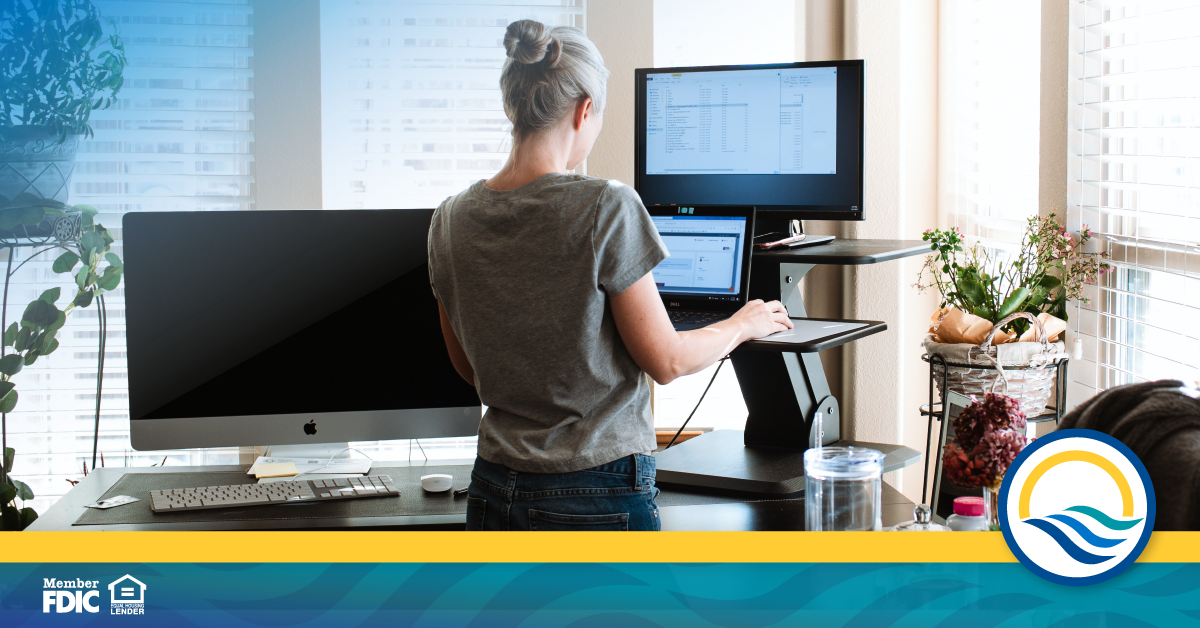Is a Standing Desk Worth It?

If you’ve noticed more of your peers using standing desks, you may have had the thought that you might be missing out on the hot new thing. Standing desks have had a surge in popularity of late, but they’re no fad — they promote better habits, have tangible health benefits, and change the way you work for the better.
How much do standing desks cost?
Before considering a standing desk, you may want to compare the cost to that of more traditional sitting desks. What you’ll find is that there isn’t a tremendous amount of difference — like with sitting desks, you can find options in just about any price range. Ultimately, you can get either kind of desk for similar price points, and the amount you spend will come down to your wants and needs.
In a buyers’ guide for The New York Times’ Wirecutter, Melanie Pinola writes that a high-end option like the Uplift V2 starts from $599 direct from the manufacturer. This desk offers electronically adjustable height that can accommodate users up to 7 feet tall as well as other conveniences for the price.
For a simpler standing desk with manual adjustment, it’s not difficult to find quality options below $150. You can also find affordable fixed-height desks that will remain at the same height once they’ve been put together. According to WebMD contributor Stephanie Watson, you could find a fixed-height standing desk for under $100.
Another option mentioned in Emma Stessman’s guide to affordable standing desks for Today is a standing desk converter. These can sit on top of a regular desk, letting you adjust the height so you can choose to sit and stand as you see fit throughout the day.
Is there a benefit to using standing desks?
Using a standing desk for work can have several long-term health benefits. Pinola notes that studies have linked sitting for long periods of time to an increased risk for heart disease, diabetes, and even cancer. Sitting for long periods with improper posture can also lead to other physical issues including back and neck problems.
By the same token, studies have correlated standing desks with several potential advantages over sitting. Healthline contributor Joe Leech notes that standing burns more calories, which can lead to improved weight loss and management. Other studies have found that using a standing desk can lead to lower blood sugar levels, reduced back pain, and even better productivity.
However, it’s important to understand that using a standing desk can have negative effects with prolonged use. Harvard Health Publishing Senior Faculty Editor Robert H. Shmerling notes that standing for the entirety of your workday can lead to back, leg, and foot pain.
The widely agreed-upon approach is to alternate between sitting and standing throughout the day. Pinola points to a study from the University of Waterloo that recommends a sit-to-stand ratio between 1-to-1 and 1-to-3.
Shmerling suggests starting with 30-60 minutes of standing a few times a day and building that up over time. You can set alarms or calendar reminders throughout the day to ensure that you’re not spending too long doing one or the other, keeping you focused and preventing distractions.
Whether you sit, stand, or both, it’s important to make sure that you’re taking time throughout the day to move around and get away from your desk. A brief walk to the vending machines or kitchen or even a stroll around the block can rejuvenate your mind and help you fend off issues like back pain.
